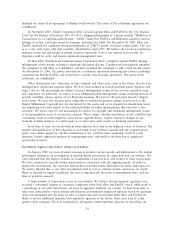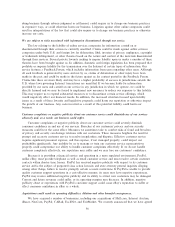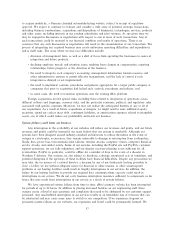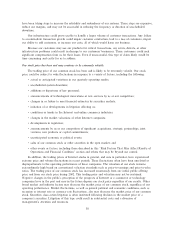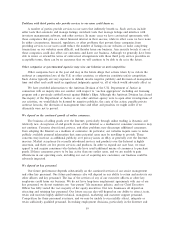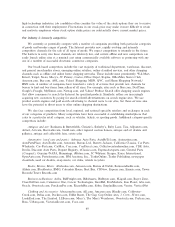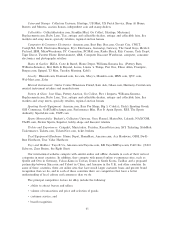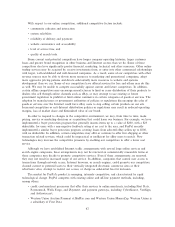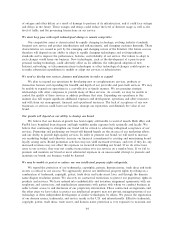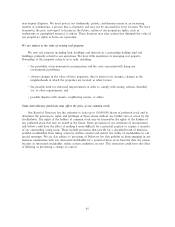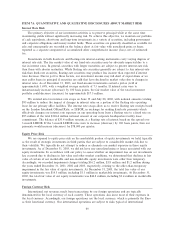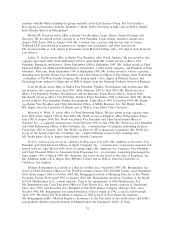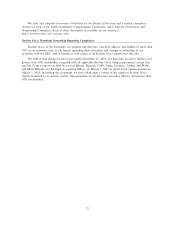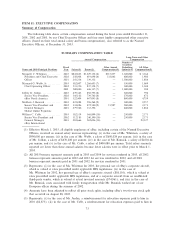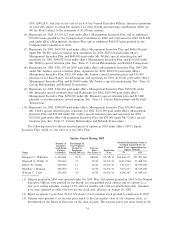eBay 2003 Annual Report Download - page 66
Download and view the complete annual report
Please find page 66 of the 2003 eBay annual report below. You can navigate through the pages in the report by either clicking on the pages listed below, or by using the keyword search tool below to find specific information within the annual report.of outages and other delays as a result of damage to portions of its infrastructure, and it could face outages
and delays in the future. These outages and delays could reduce the level of Internet usage as well as the
level of traÇc and the processing transactions on our service.
We must keep pace with rapid technological change to remain competitive.
Our competitive arena is characterized by rapidly changing technology, evolving industry standards,
frequent new service and product introductions and enhancements, and changing customer demands. These
characteristics are caused in part by the emerging and changing nature of the Internet. Our future success
therefore will depend on our ability to adapt to rapidly changing technologies and evolving industry
standards and to improve the performance, features, and reliability of our service. Our failure to adapt to
such changes would harm our business. New technologies, such as the development of a peer-to-peer
personal trading technology, could adversely aÅect us. In addition, the widespread adoption of new
Internet, networking, or telecommunications technologies or other technological changes could require us
to make substantial expenditures to modify or adapt our services or infrastructure.
We need to develop new services, features and functions in order to expand.
We plan to expand our operations by developing new or complementary services, products or
transaction formats and expanding the breadth and depth of our pre-trade and post-trade services. We may
be unable to expand our operations in a cost-eÅective or timely manner. We are pursuing strategic
relationships with other companies to provide many of these services. As a result, we may be unable to
control the quality of these services or address problems that arise. Expanding our operations in this
manner also will require signiÑcant additional expenses and development, operations and other resources
and will strain our management, Ñnancial and operational resources. The lack of acceptance of any new
businesses or services could harm our business, damage our reputation, and diminish the value of our
brand.
Our growth will depend on our ability to develop our brand.
We believe that our historical growth has been largely attributable to word of mouth. Both eBay and
PayPal have beneÑted from frequent and high visibility media exposure both nationally and locally. We
believe that continuing to strengthen our brand will be critical to achieving widespread acceptance of our
services. Promoting and positioning our brand will depend largely on the success of our marketing eÅorts
and our ability to provide high-quality services. In order to promote our brand, we will need to increase
our marketing budget and otherwise increase our Ñnancial commitment to creating and maintaining brand
loyalty among users. Brand promotion activities may not yield increased revenues, and even if they do, any
increased revenues may not oÅset the expenses we incurred in building our brand. If we do attract new
users to our services, they may not conduct transactions over our services on a regular basis. If we fail to
promote and maintain our brand or incur substantial expenses in an unsuccessful attempt to promote and
maintain our brand, our business would be harmed.
We may be unable to protect or enforce our own intellectual property rights adequately.
We regard the protection of our trademarks, copyrights, patents, domain names, trade dress and trade
secrets as critical to our success. We aggressively protect our intellectual property rights by relying on a
combination of trademark, copyright, patent, trade dress and trade secret laws, and through the domain
name dispute resolution system. We also rely on contractual restrictions to protect our proprietary rights in
products and services. We have entered into conÑdentiality and invention assignment agreements with our
employees and contractors, and nondisclosure agreements with parties with whom we conduct business in
order to limit access to and disclosure of our proprietary information. These contractual arrangements and
the other steps we have taken to protect our intellectual property may not prevent misappropriation of our
technology or deter independent development of similar technologies by others. We pursue the registration
of our domain names, trademarks, and service marks in the U.S. and internationally. EÅective trademark,
copyright, patent, trade dress, trade secret, and domain name protection is very expensive to maintain and
64


